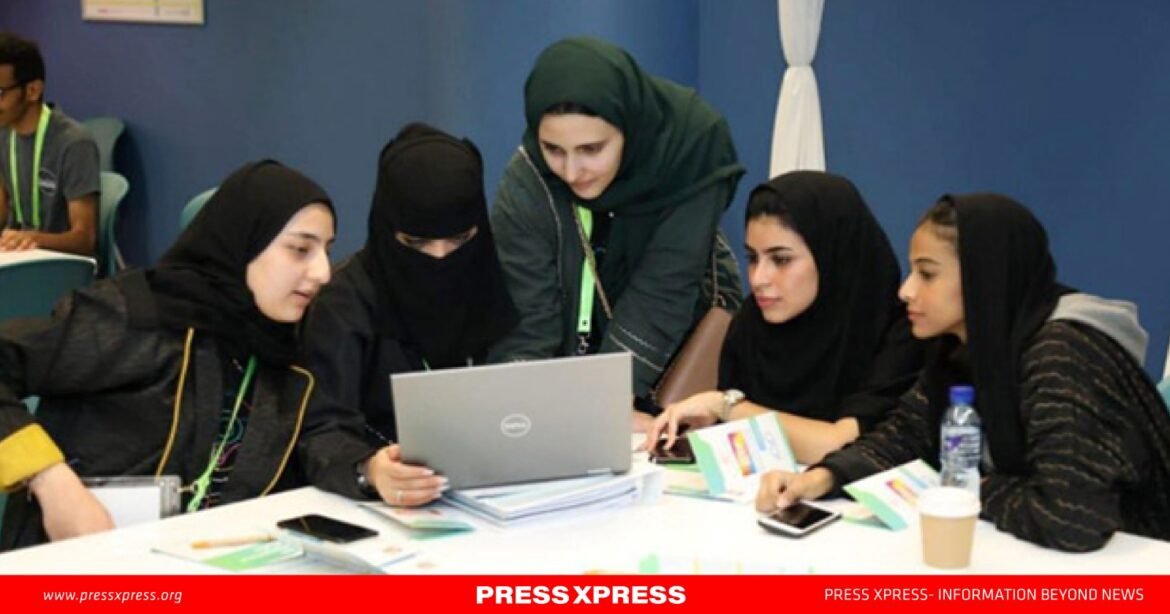Key Highlights:
- Boost in Female Participation: Vision 2030 promotes gender equality, increasing opportunities for women in education and careers, especially in STEM fields
- Curriculum Overhaul: Shift towards a diverse curriculum that balances religious studies with critical thinking, creativity, and vocational skills
- Tech-Driven Classrooms: Major investments in EdTech, digital platforms like Madrasati, and Smart Schools to equip students with essential digital skills
- Global Competitiveness: Focus on creating a workforce ready for a knowledge-based economy, positioning Saudi Arabia as a regional leader in education modernization

Saudi Arabia has traditionally upheld a conservative stance on women’s education, deeply rooted in religious and cultural norms. Historically, women’s educational opportunities were limited, with a focus on subjects considered appropriate for traditional roles. Social sciences, religious studies, and homemaking skills were prioritized, while STEM fields and co-education remained largely restricted.
However, recent developments reflect a significant shift. Under Vision 2030, Saudi Arabia has embarked on a path to modernize and diversify its educational landscape. The new education policy aims to provide equal opportunities for women, emphasizing their inclusion in a broader range of fields like technology, engineering, and business. This policy not only encourages greater female participation in the workforce but also fosters an environment of gender equality in education, promoting skills that align with the country’s economic goals. The mood surrounding these reforms is one of cautious optimism, as they signal a move away from the previously orthodox system towards a more progressive and inclusive future for women in Saudi Arabia.

Increased Female Participation
One of the standout achievements of Vision 2030 is the substantial increase in female participation in the Saudi education system. Traditionally, female access to education and employment was restricted, but recent reforms have focused on promoting gender equality. The government has not only expanded educational opportunities for women but also encouraged them to pursue careers in diverse fields, including science, technology, engineering, and mathematics (STEM).

In addition to increased enrollment rates, policies have been enacted to support female empowerment. For example, in 2018, the kingdom lifted the ban on female drivers, enabling women to attend educational institutions and work with greater independence. Furthermore, the Ministry of Education has invested in scholarships and partnerships with international institutions to support female students’ access to higher education abroad. As a result, more Saudi women are entering universities and gaining professional qualifications, creating a more inclusive and skilled workforce.
Curriculum Reforms
Saudi Arabia’s curriculum reforms are central to Vision 2030’s goal of developing a globally competitive education system. Historically, the curriculum focused heavily on religious studies. However, the reforms are gradually shifting towards a more balanced approach that emphasizes critical thinking, creativity, and vocational skills alongside religious teachings.
The introduction of a comprehensive new curriculum that includes subjects such as philosophy, art, and social sciences is reshaping the learning experience. This curriculum diversification aims to produce well-rounded graduates with the skills needed to thrive in a competitive global economy. Additionally, the Saudi government has taken steps to improve teacher training and professional development, ensuring that educators are well-equipped to deliver the reformed curriculum. The focus on STEM fields is particularly noteworthy, as it aligns with Vision 2030’s emphasis on innovation and technology-driven industries.

Investments in Technology
Recognizing the pivotal role of technology in modern education, Saudi Arabia has made substantial investments in educational technology (EdTech) as part of Vision 2030. This commitment was particularly evident during the COVID-19 pandemic, which accelerated the shift to digital learning. The government launched platforms such as Madrasati, a national online education portal, to ensure continuity of learning for millions of students.
Beyond digital learning platforms, Saudi Arabia is integrating technology into classrooms through initiatives like Smart Schools, which incorporate interactive tools, virtual reality, and artificial intelligence to enhance the learning experience. Additionally, the government is partnering with global tech giants to provide students with access to cutting-edge tools and resources. These investments are not only modernizing the education system but also equipping students with digital skills essential for the evolving job market.
Challenges and the Road Ahead
While the reforms have made significant strides, Saudi Arabia’s education system still faces challenges. Integrating new curricula and technology requires ongoing training for teachers and investment in infrastructure. Moreover, despite increased female participation, there remain cultural and societal barriers that may hinder the full realization of Vision 2030’s goals.
To ensure sustained progress, the Saudi government will need to focus on creating a supportive environment that encourages critical thinking, creativity, and innovation. Additionally, fostering partnerships with international institutions and private sector stakeholders will be key to driving further advancements in the education sector.
Conclusion
The reforms in Saudi Arabia’s education system under Vision 2030 signify a bold step towards a diversified and knowledge-based economy. By increasing female participation, overhauling the curriculum, and embracing technology, the kingdom is laying the groundwork for a more inclusive and progressive society. As these reforms continue to unfold, Saudi Arabia’s education system will likely emerge as a model for modernization in the region, offering valuable lessons for other countries seeking to balance tradition with progress.


